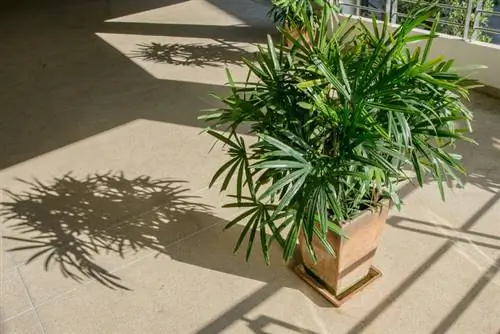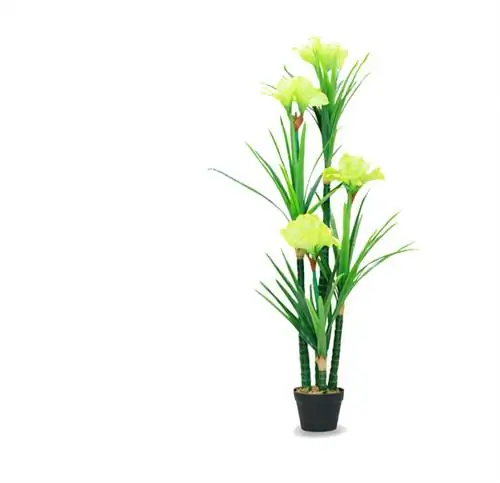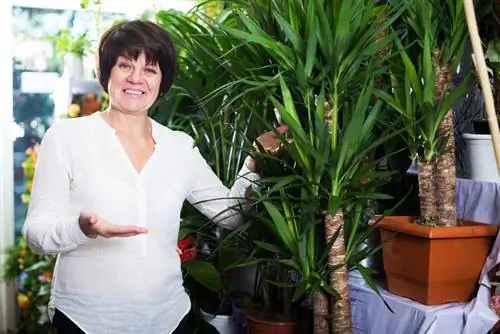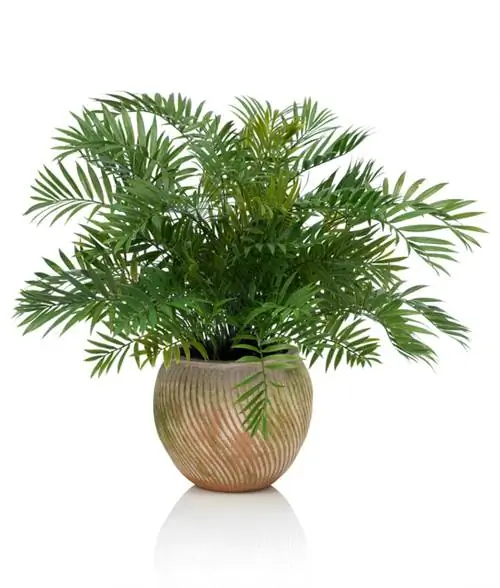- Author admin [email protected].
- Public 2023-12-16 16:46.
- Last modified 2025-01-23 11:20.
If they are cared for well, they grow relatively large, are not too demanding and are ideal for green interior design: we are talking about magnificent indoor palms. It’s not just “real” palm trees that populate our rooms. Some plants such as the yucca are called palm trees in our language, but belong to a different plant family. In this article we would like to take a closer look at the most common types so that you can identify the palm tree that will thrive in your area.
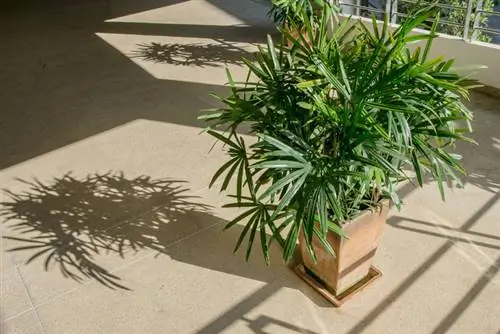
How do I find out which palm tree I have?
To identify the type of indoor palm you have, pay attention to characteristics such as leaf shape and structure, growth habit and trunk. Common species include golden fruit palm, mountain palm, hemp palm and Kentia palm. Yucca, Madagascar palm and dragon tree are similar plants, but do not belong to the palm family.
How to recognize “real” palm trees
Due to their growth habit, real palm trees can be recognized without a doubt by the following characteristics, despite their immense biodiversity:
- Palm trees have no secondary thickness growth. They therefore initially only grow in width and then only increase in size.
- The heart from which the leaves sprout moves upwards. This creates the characteristic tuft, which gives the plants their appeal.
- The dried leaves are thrown off and form the trunk.
- Unlike trees, palm trees do not branch.
However, exceptions confirm the rule even with palm trees. For example, there are palm tree species that form lateral shoots from which even offshoots can be cut. Other varieties form underground runners and grow like a small group of palm trees.
Some palm trees commonly found in our rooms:
- Gold fruit palm: Its strongly feathered, dense foliage in a lush green is extremely attractive.
- Mountain Palm: It also has very pinnate leaves. This slow-growing palm prefers bright to partially shaded, sunny locations.
- Hemp palm: With its expansive, stable compartments, it requires a relatively large amount of space and looks very attractive thanks to its strongly structured trunk.
- Kentia palm: It has slightly arching pinnate leaves similar to those of the mountain palm.
The Yucca, an asparagus plant
Probably the best-known indoor palm is the yucca (palm lily), which, however, is not a member of the palm family. Relatively undemanding, this plant can grow up to five meters high even indoors and looks very appealing with its attractive foliage. Unlike many palm trees, yuccas bloom regularly and produce highly fragrant inflorescences that look like lily of the valley.
The Madagascar Palm
This succulent even forgives occasional care mistakes and is extremely robust. It is one of the dog poisonous plants and should therefore be placed out of reach of animals. Like a palm tree, it only forms elongated individual leaves in the upper area, but unlike palm leaves, they are neither fan-shaped nor pinnate. The trunk is heavily thorny, which looks extremely attractive.
The Dragon Tree
It is also a member of the asparagus family and, if you look closely, looks very similar to the yucca. However, it has finer foliage that can be colored differently.
Tip
Indoor palms look particularly attractive when you place them in small groups. The differently shaped and colored leaves create a very attractive look and an enchanting play of light.

